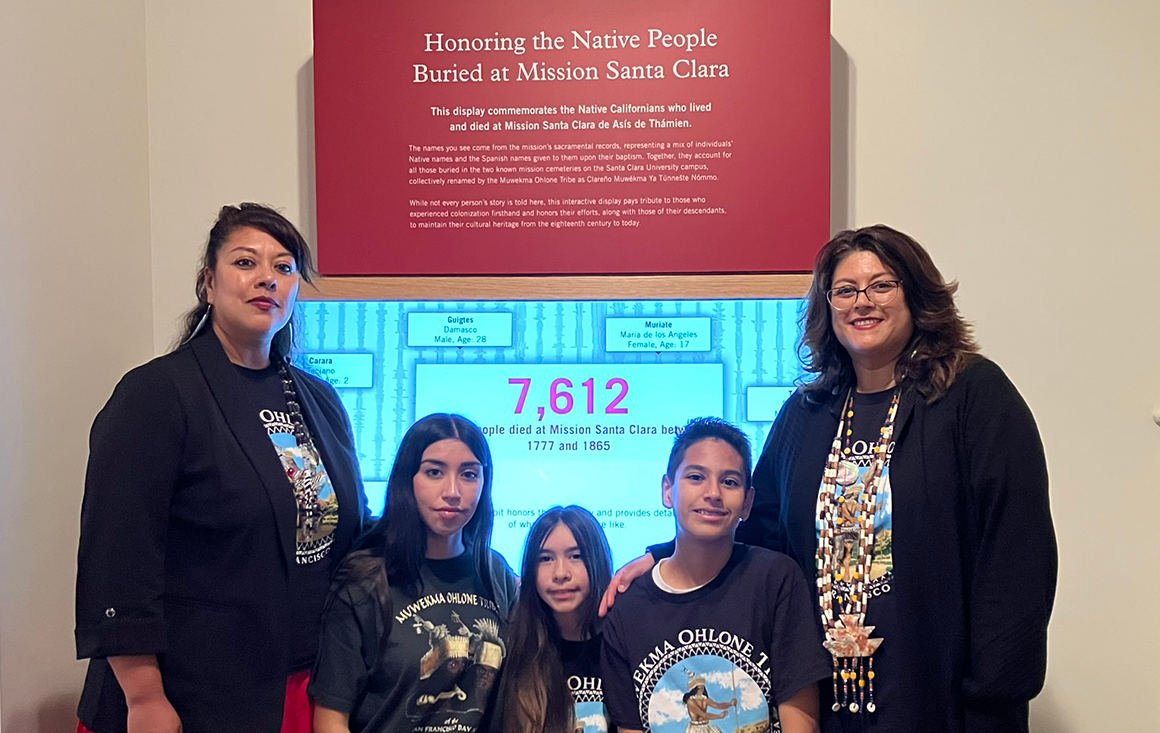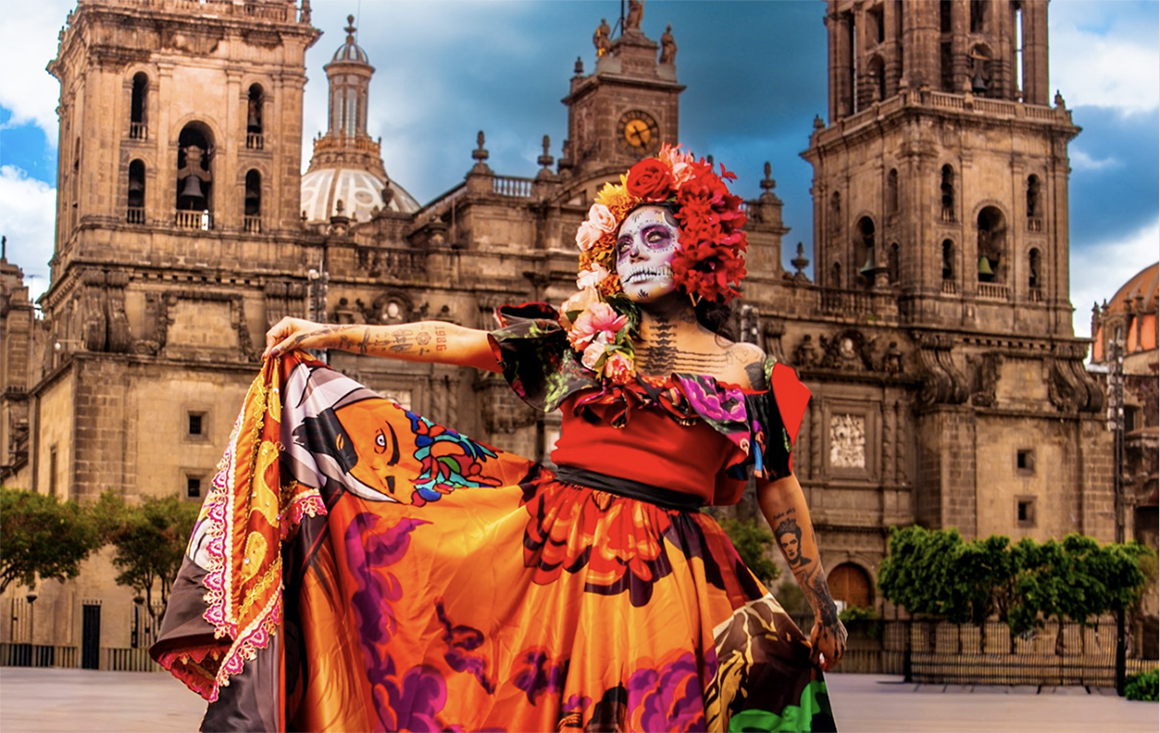Those Who Came Before

On Indigenous Peoples’ Day, representatives from the Muwekma Ohlone Tribe of the San Francisco Bay Area attended a soft opening for a new addition to the de Saisset Museum.
Funded by a grant from the American Council of Learned Societies, a digital memorial kiosk was added to the museum’s exhibit “California Stories From Thámien to Santa Clara,” which covers Ohlone history, the Mission period, and the early roots of Santa Clara University. The memorial commemorates the lives of the 7,612 indigenous people who died at Mission Santa Clara and are buried in the two cemeteries under the land that Santa Clara University now sits on. This is only the second permanent memorial for the Indigenous community out of the 21 California missions.
Inspired by discussions in the 2018 Ohlone History Working Group, the project was designed through close collaboration between Amy Lueck, an associate professor of English, Lee Panich, a professor of anthropology, Lauren Baines, the assistant director of the de Saisset Museum, dozens of students, and several members of the Muwekma Ohlone tribe. The memorial not only shares the names of the thousands of lives lost from disease and harsh conditions, but it also features biographies of dozens of specific indigenous people and video interviews with Muwekma Ohlone people detailing the legacy of the mission period on their tribe today.
“The ability to pull that data out and see the story behind it is really important,” explains Lueck. “These aren’t just numbers. These are lives lived. I think that’s one of the things that really struck our students working on the biographies as they felt that difference between data and story. You can’t get that from a plaque.”
Students in Lueck and Panich’s “Virtual Santa Clara” class were tasked with reviewing thousands of mission sacramental documents held in the University’s library archives—including baptismal, marriage, and death records—to build narratives around indigenous leadership and resistance, working conditions at the Mission, and the continued survival of indigenous people after the Mission era.
“I think there’s a lot of misinformation about what life was like for indigenous people at Mission Santa Clara, and the scale of what we’re talking about,” says Baines. “We hope that this interactive kiosk will present these stories in a way that’s more accessible to people of all generations and backgrounds, sparking new questions and reminding people that the Muwekma Ohlone are still here.”
Isabella Gomez ’27, SCU’s inaugural Muwekma Ohlone Scholarship recipient, worked on the memorial project alongside SCU students while she was a high school senior. One of the most meaningful elements of the memorial, she says, was adding individuals’ indigenous names alongside their Spanish names.
“Including these names was a way of preserving an aspect of that person’s Native identity in our present day, which was something that the Mission actively sought to suppress,” Gomez explains. “It’s important for us to address this history of missionization and colonization so its legacies aren’t maintained today.”
In the future, while more biographies may be added to the memorial, there are also larger plans to add a similar commemoration within the Mission Church or near the Rose Garden cemetery in order to continue “pulling the past into the present,” as Lueck puts it.
“This isn’t just a historical project,” she adds. “It’s about recognizing who was here before us in order to appreciate their continuance today.”
Learn more about Ohlone people, heritage, and the history of Thámien, the Ohlone village located at what is now the site of Santa Clara University.


